The Heart of Gondwana

Around 400 m.y. ago (Devonian time) the continental block of East Antarctica had stabilized above sea level, within the heart of Gondwana. Then, up to about 180 m.y. ago (Jurassic), a sequence of sedimentary rocks (including thick coal seams and glacial deposits) accumulated. The best exposures occur throughout the Transantarctic Mountains and the Prince Charles Mountains. |
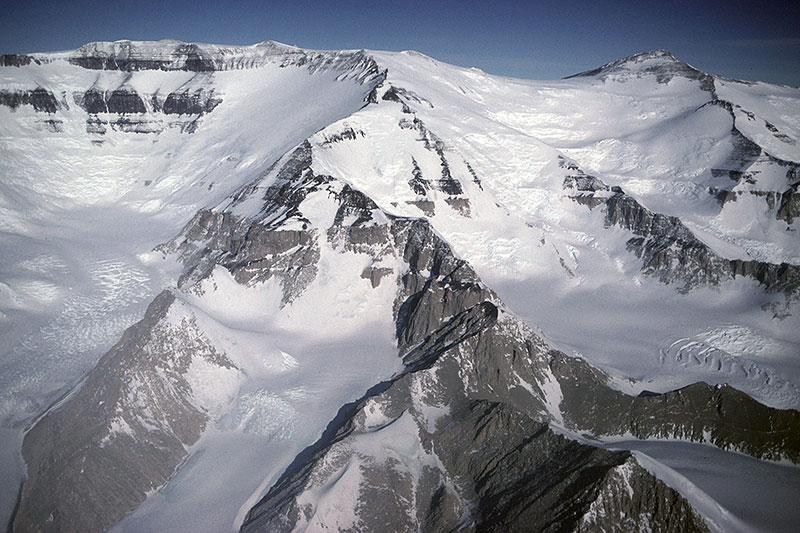 High in the Transantarctic Mountains, near Shackleton Glacier, the “Kukri Erosion Surface”, separates metamorphic and igneous rocks of the Ross Orogeny from flat-lying Palaeozoic sedimentary rocks of the “Beacon Supergroup”. The erosion surface is a peneplain which represents a long period of weathering and erosion before the overlying terrestrial sediments were laid down. | 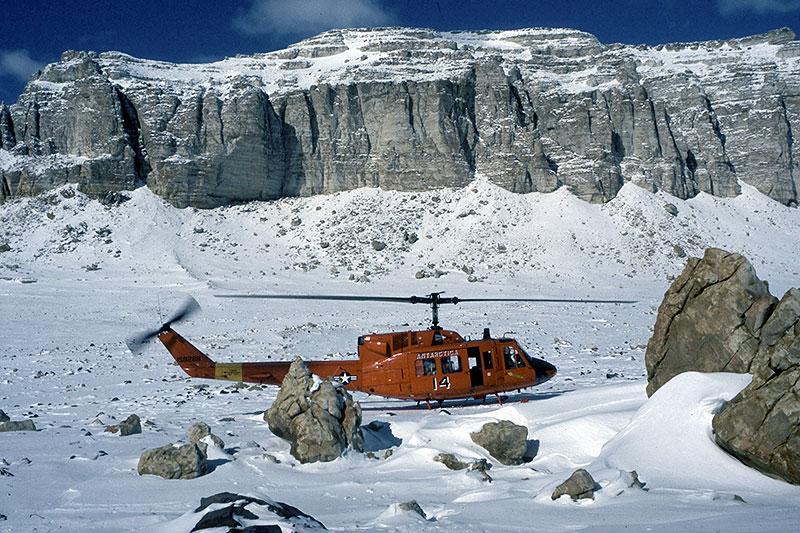 The Beacon Supergroup is dominated by impressive cliffs of buff sandstone as here in the Olympus Range in the Victoria Land Dry Valleys region. A US military Huey helicopter gives the scale. | 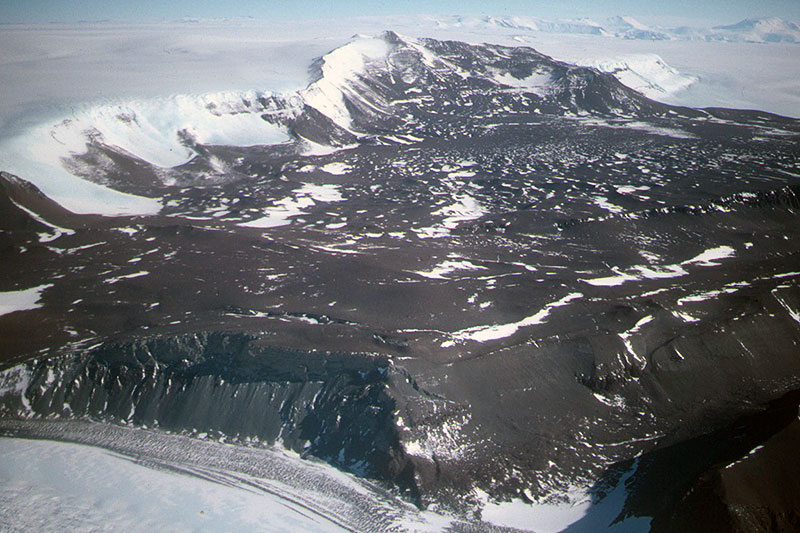 Extensive areas of Beacon strata crop-out near the head of Shackleton Glacier at the edge of the Polar Plateau. Here they are intruded by cliff-forming Ferrar dolerite, and bordered (in the left foreground) by a thick remnant of Cenozoic glacial deposits (the Sirius Group). | 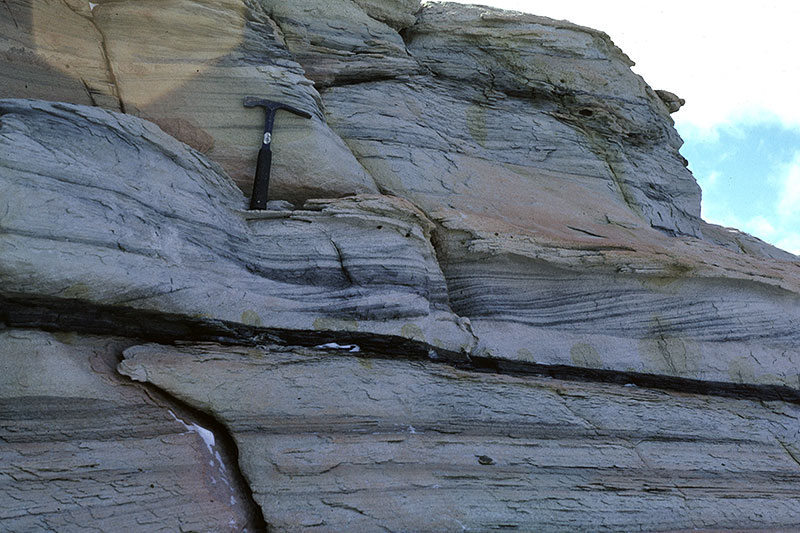 The Beacon sandstone was deposited mainly by rivers, hence forming this corssbedding with concentrations of black wood fragments. This example is exposed on a ridge above Beacon Valley, Victoria Land. |
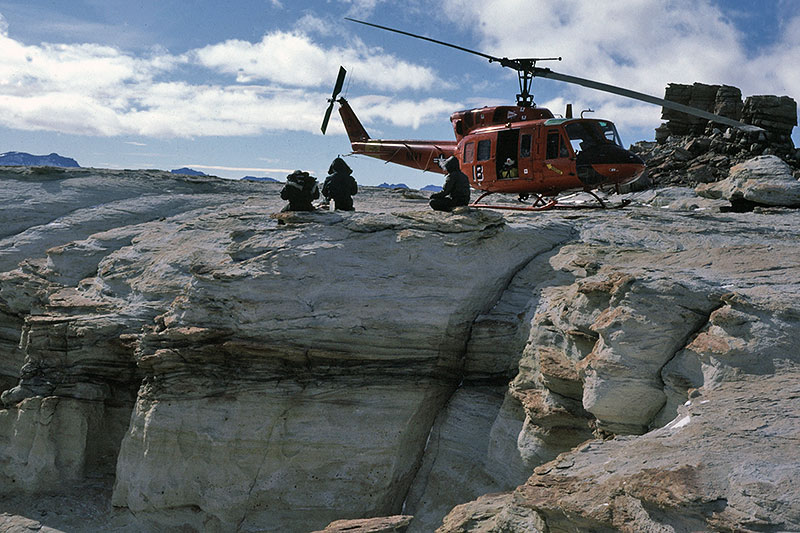 Horizontally bedded Beacon sandstone forms a convenient helicopter landing site above Beacon Valley, Victoria Land. | 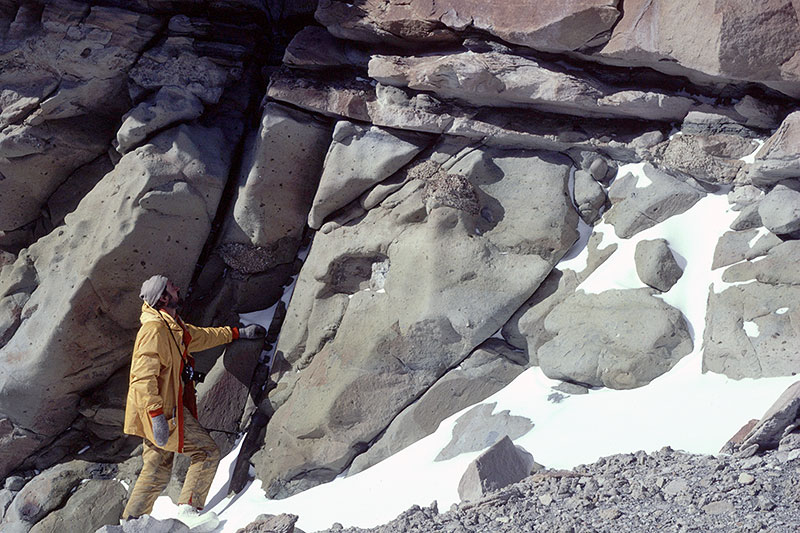 The Beacon Supergroup contains widespread evidence of Late Palaeozoic (Permian) glaciations in the form of poorly sorted rocks (“tillites”) near Beacon Valley, Victoria Land. These “tillites” are representative of a widespread and long-lived phase of glaciations that affected all the southern hemisphere continents comprising Gondwana. | 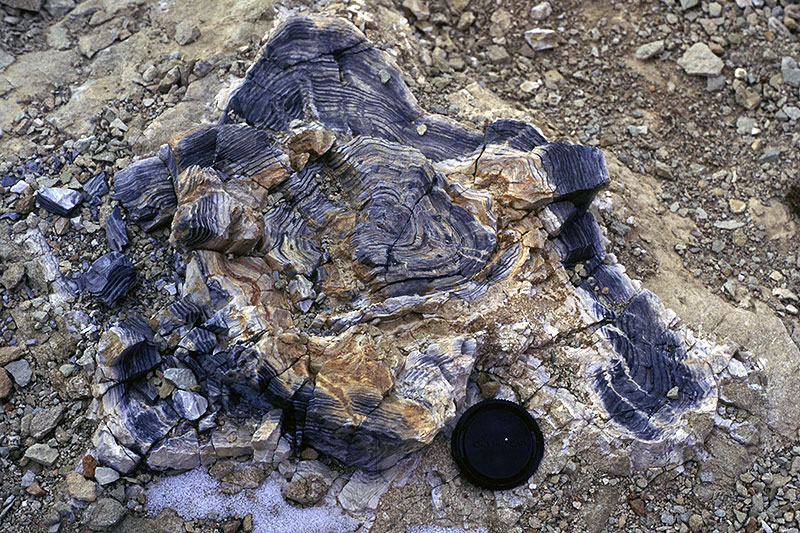 The base of a silicified Triassic tree stump fossilised in braided river sandstone of the Beacon Supergroup at Collinson Ridge, Shackleton Glacier, Transantarctic Mountains. | 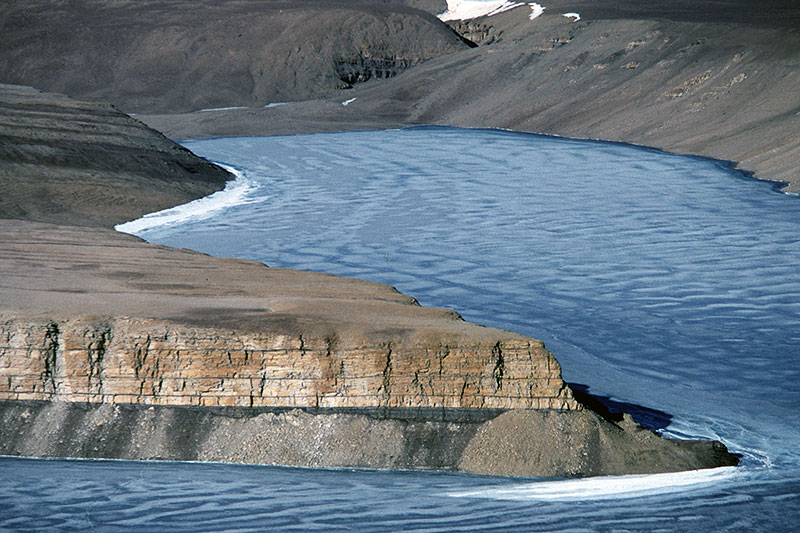 Strata equivalent to the Beacon Supergroup occur in the northern Prince Charles Mountains, East Antarctica, where they are known as the Amery Group. These Permian sandstones and mudstones are best exposed around Radok Lake in Amery Oasis, as in this view. |
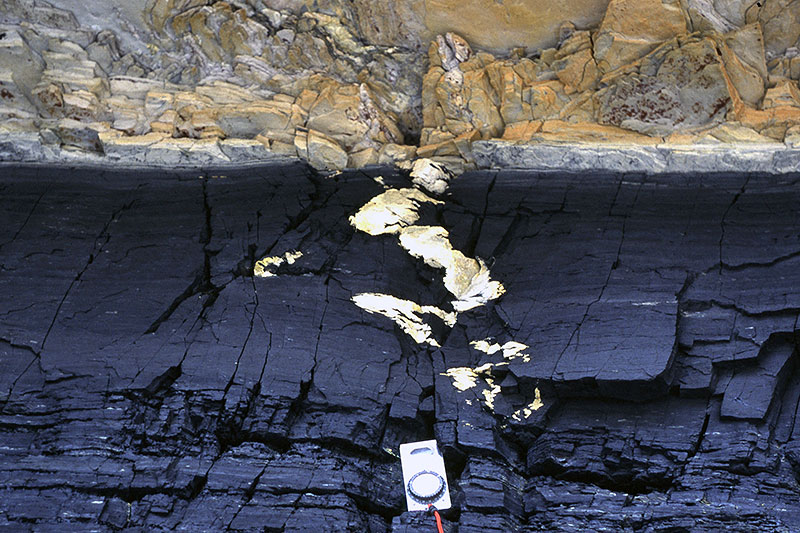 Coal seam with burrow extending below sandstone bed in the Amery Group, Glossopteris Gully, Amery Oasis, East Antarctica. | 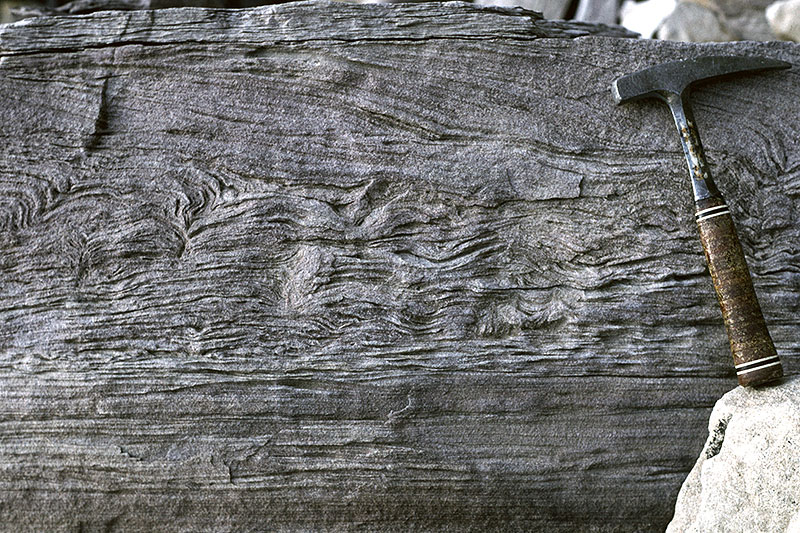 Contorted cross-bedding and water escape structures in laminated sandstone, Amery Group, Glossopteris Gully, Amery Oasis, East Antarctica. | 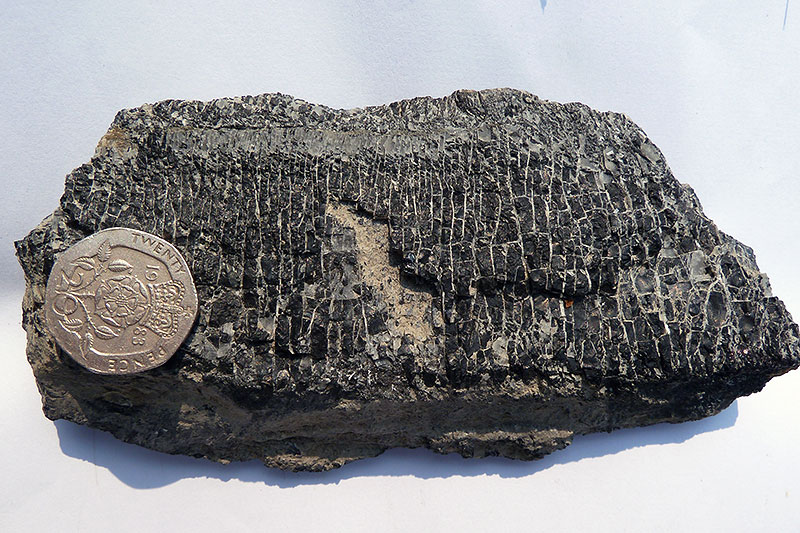 Permian strata of the Amery Group contain fragments of trees in addition to coal. This example is of Glossopteris woody tissue, and retains the original cellular structure. The location is Amery Oasis in the Prince Charles Mountains, East Antarctica.
| 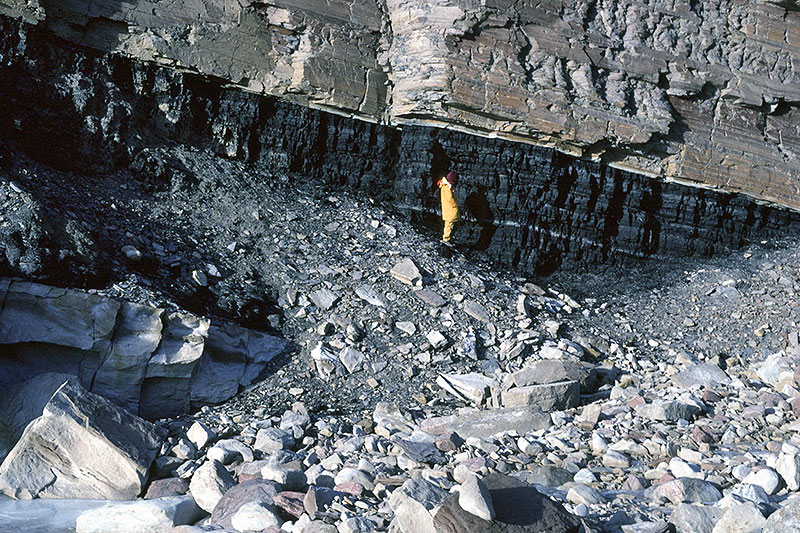 Coal is arguably the most abundant mineral in East Antarctica. Here a thick seam of coal is evident in the Amery Group in association with sandstone at Glossopteris Gully, Amery Oasis in the northern Prince Charles Mountains. Barrie McKelvey for scale. |
| Photos Michael Hambrey |